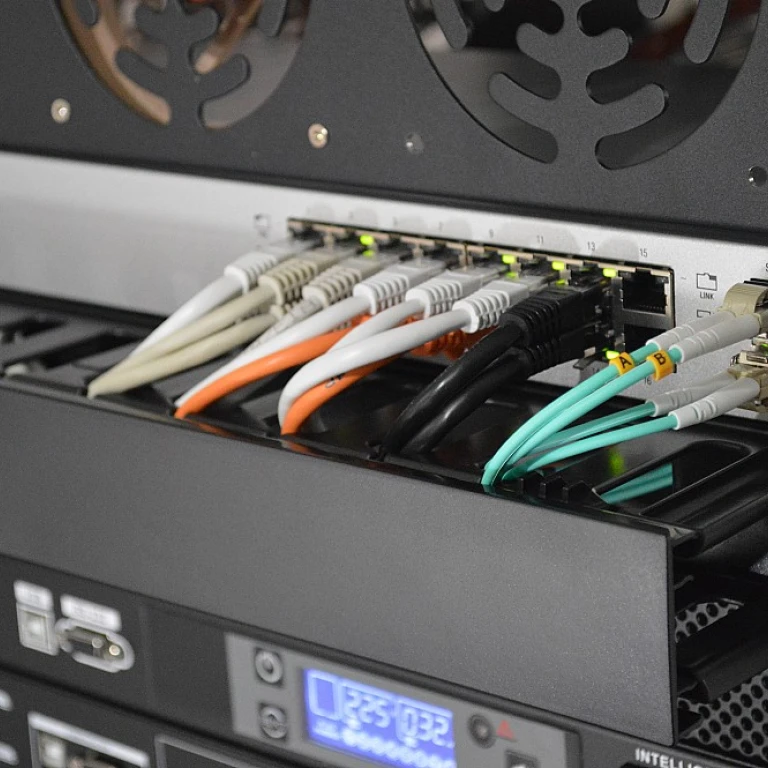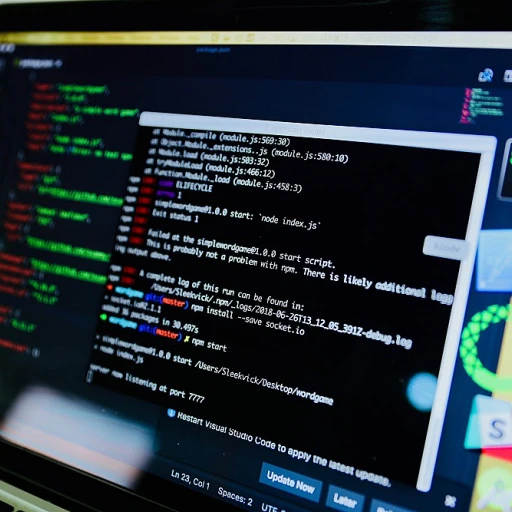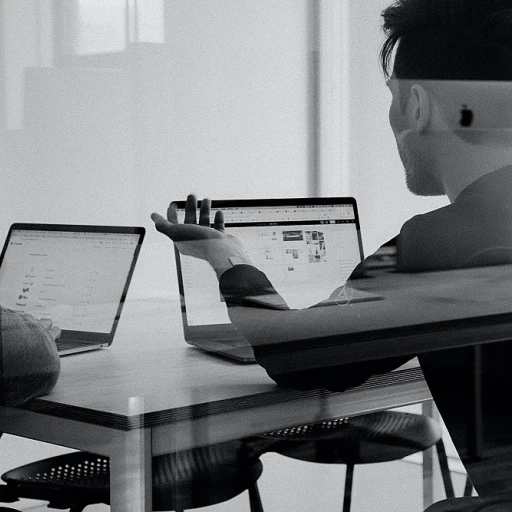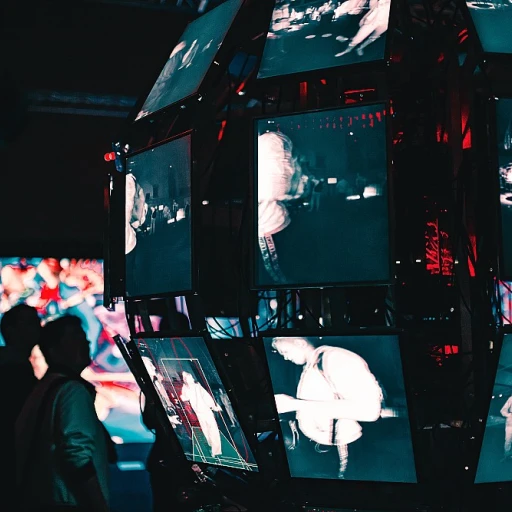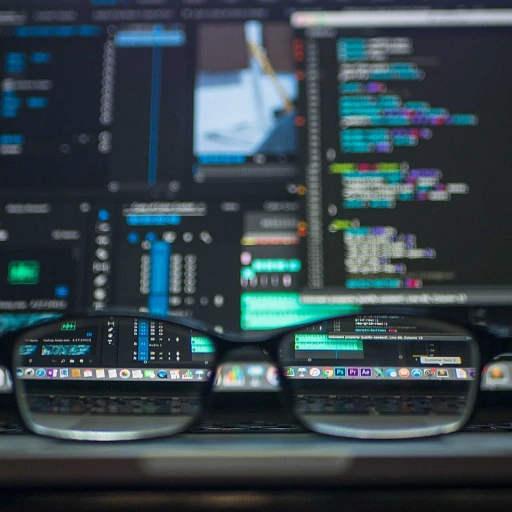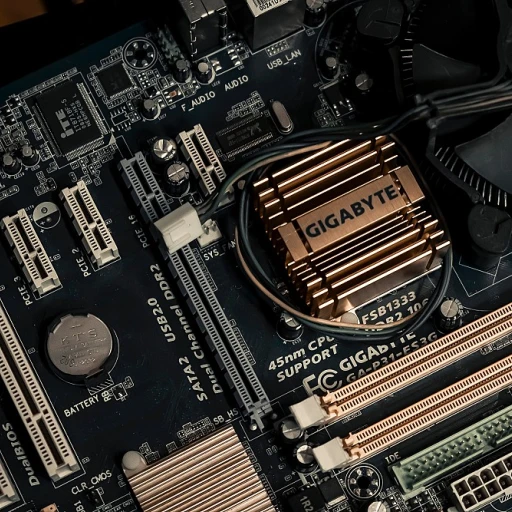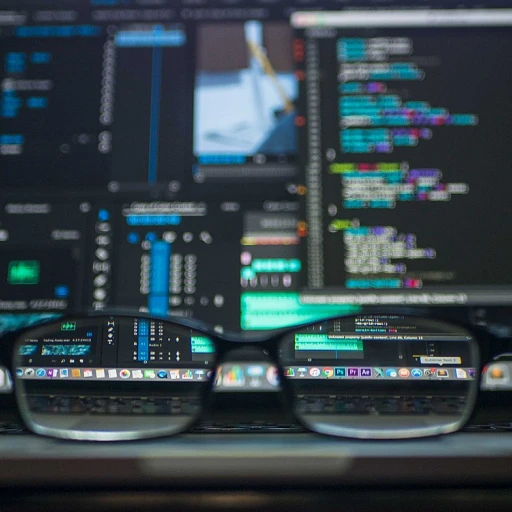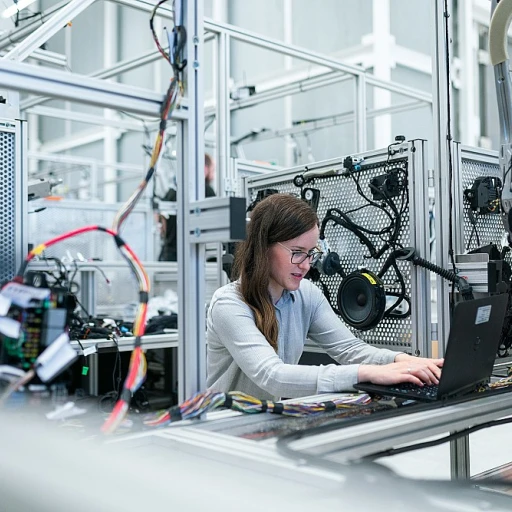
The Rise of Augmented Reality in Everyday Life
Augmented Reality: A Part of Daily Life
In recent years, augmented reality (AR) has transitioned from a futuristic concept to an integral part of our daily lives. This shift is largely due to the proliferation of AR devices like Microsoft's Hololens and Apple's Vision Pro, which have brought AR experiences closer to users. These devices, often referred to as smart glasses, blend digital elements with the real world, creating a mixed reality that enhances how we interact with our surroundings.
AR technology has evolved significantly, with advancements in eye tracking and hand tracking allowing for more intuitive user interactions. Devices now offer features such as real-time tracking and holographic displays, which open windows to new possibilities in both personal and professional settings. The integration of AR into everyday life is evident in various applications, from navigation and gaming to education and healthcare.
Companies like Google and Microsoft have been at the forefront of this evolution, with products like Google Glass and Microsoft Hololens setting the standard for AR devices. These technologies not only enhance user experiences but also improve productivity by providing hands-free access to information and tools.
As AR continues to develop, the focus is on improving battery life and field view, ensuring that these devices are practical for extended use. The future of AR is promising, with potential applications expanding across industries. For more insights into the exploration of augmented reality in software, further reading is recommended.
Technological Advancements in AR Devices
Advancements in AR Device Technology
In recent years, the technological landscape of augmented reality (AR) devices has undergone significant transformation. The evolution of AR technology is marked by the integration of sophisticated features that enhance user experiences and broaden the scope of applications. Devices like Microsoft's Hololens and Apple's Vision Pro have set benchmarks in the industry, offering users a glimpse into the future of digital interaction.
One of the most notable advancements is in the realm of tracking technologies. Eye tracking and hand tracking have become pivotal in creating more immersive and intuitive user interactions. These technologies allow AR devices to respond in real time to user inputs, making the experience more seamless and engaging. For instance, the Microsoft Hololens utilizes advanced sensors to track hand movements, enabling users to interact with holographic elements as if they were tangible objects.
Another critical area of development is the improvement in field of view and display quality. Devices such as the Magic Leap and Google Glass Enterprise have made strides in offering wider and clearer fields of view, which are essential for creating convincing augmented and mixed reality experiences. The clarity and resolution of digital overlays have improved, allowing for more detailed and realistic holographic projections.
Battery life and processing power are also crucial factors that have seen enhancements. As AR devices become more powerful, the demand for longer battery life increases. Innovations in battery technology and energy-efficient processors have allowed devices to operate for extended periods without compromising performance. This is particularly important for enterprise applications where prolonged use is often required.
Moreover, the integration of software ecosystems like Windows Holographic and the Microsoft Store has facilitated the development and distribution of AR apps. These platforms provide developers with the tools and resources needed to create innovative applications that leverage the full potential of AR technology. The availability of a diverse range of apps enhances the utility of AR devices, making them more appealing to a broader audience.
As we look to the future, the continuous evolution of AR device technology promises to unlock new possibilities in various industries. From enhancing user interaction to expanding the capabilities of digital environments, the advancements in AR technology are paving the way for a more connected and interactive world. For more insights into the ongoing developments in augmented reality, you can explore our detailed analysis on exploring augmented reality in software.
Software Development for AR Platforms
Crafting the Digital Landscape for Augmented Reality
As augmented reality (AR) devices like the Microsoft Hololens and Apple Vision Pro continue to evolve, the software development landscape is transforming to meet the demands of these advanced technologies. The creation of AR software is not just about building apps; it's about crafting immersive experiences that seamlessly blend the digital and physical worlds.
Developers are tasked with integrating complex features such as eye tracking, hand tracking, and real-time holographic rendering into their applications. These features enhance user interaction, allowing for more intuitive and natural experiences. For instance, the real-time capabilities of AR software enable users to interact with digital objects as if they were part of the real world.
Moreover, platforms like Windows Holographic and the Microsoft Store provide developers with the tools and resources needed to create innovative AR applications. These platforms support a wide range of devices, from smart glasses like Google Glass and Magic Leap to enterprise solutions like Glass Enterprise.
One of the key challenges in AR software development is optimizing for field view and battery life. Developers must ensure that their applications run smoothly on various devices without draining resources. This requires a deep understanding of both hardware and software, as well as a commitment to continuous innovation.
As the industry moves forward, we can expect to see more sophisticated AR applications that leverage the full potential of mixed reality. The integration of augmented intelligence and advanced tracking technologies will further enhance the user experience, opening new possibilities for both consumers and businesses.
User Interaction and Experience in AR
Enhancing User Interaction in Augmented Reality
As augmented reality (AR) technology continues to evolve, the way users interact with these devices is becoming increasingly sophisticated. The integration of advanced features like eye tracking and hand tracking is transforming the user experience, making it more intuitive and immersive. Devices such as the Microsoft HoloLens and Apple Vision Pro are at the forefront, offering users a seamless blend of digital and physical worlds.
One of the key aspects of user interaction in AR is the ability to manipulate virtual objects in real time. This is achieved through technologies like hand tracking, which allows users to interact with holographic versions of objects as if they were tangible. The Microsoft HoloLens, for instance, uses a combination of sensors and cameras to track hand movements, enabling users to open windows, navigate the start menu, and interact with apps in a natural way.
Designing for User-Centric Experiences
Creating a user-centric experience in AR involves more than just advanced tracking technologies. It requires a deep understanding of how users interact with the device and the digital content it presents. Companies like Google and Magic Leap are investing heavily in research to optimize the field view and battery life of their smart glasses, ensuring that users can enjoy extended sessions without discomfort.
Moreover, the integration of mixed reality features in devices such as the Glass Enterprise and Windows Holographic platforms is pushing the boundaries of what is possible. These technologies allow for a more personalized experience, where settings can be adjusted to suit individual preferences, enhancing both usability and satisfaction.
Challenges and Opportunities
Despite the advancements, there are still challenges to overcome in the realm of AR user interaction. Ensuring that the technology is accessible and easy to use for a broad audience remains a priority. As the industry continues to innovate, the focus will be on refining the user interface and expanding the range of applications available through platforms like the Microsoft Store.
In conclusion, the future of user interaction in augmented reality looks promising. With continuous improvements in technology and a growing understanding of user needs, AR devices are set to become an integral part of our daily lives, offering experiences that are not only immersive but also highly functional.
Industry Applications of AR Technology
Transforming Industries with Augmented Reality
Augmented reality (AR) technology is reshaping various industries by offering innovative solutions that enhance user experiences and streamline processes. From healthcare to manufacturing, the integration of AR devices like the Microsoft HoloLens and Magic Leap is revolutionizing how businesses operate.
Healthcare: Enhancing Precision and Training
In the healthcare sector, AR is being utilized to improve surgical precision and provide immersive training experiences. Devices such as smart glasses and AR apps enable surgeons to access holographic versions of patient data in real time, enhancing decision-making during procedures. Additionally, medical students benefit from AR-based training modules that simulate real-life scenarios, offering hands-on experience without the associated risks.
Manufacturing: Streamlining Operations
Manufacturing industries are leveraging AR technology to optimize production lines and improve worker efficiency. By using AR glasses, workers can access digital overlays that provide step-by-step instructions, reducing errors and training time. The integration of hand tracking and eye tracking features further enhances the user experience, allowing for seamless interaction with digital content.
Retail: Revolutionizing Customer Engagement
Retailers are adopting AR to create engaging shopping experiences that blend the physical and digital worlds. AR apps allow customers to visualize products in their home settings before making a purchase, enhancing satisfaction and reducing return rates. Companies like Apple Vision and Google Glass are at the forefront of this transformation, offering devices that open windows to new possibilities in customer interaction.
Education: Interactive Learning Environments
In education, AR is transforming traditional learning environments into interactive experiences. Students can explore complex subjects through holographic displays, making learning more engaging and effective. The use of AR in education not only enhances comprehension but also fosters creativity and critical thinking skills.
Logistics: Improving Efficiency and Accuracy
Logistics companies are utilizing AR to improve accuracy and efficiency in warehouse operations. By equipping workers with AR glasses, companies can provide real-time data and instructions, reducing the time spent on locating and processing items. This technology also enhances safety by providing alerts and guidance in potentially hazardous situations.
As AR technology continues to evolve, its applications across various industries will expand, offering new opportunities for innovation and growth. The future of AR devices promises to bring even more advanced features and capabilities, further transforming the way we interact with the world around us.
Future Trends and Predictions for AR Devices
Emerging Trends in Augmented Reality Devices
The future of augmented reality (AR) devices is poised for significant transformation, driven by continuous technological advancements and evolving user expectations. As AR becomes more integrated into everyday life, several trends are emerging that will shape the next generation of devices.
Enhanced User Interaction
One of the key trends is the focus on improving user interaction and experience. Devices like the Microsoft Hololens and Apple Vision Pro are pushing the boundaries with features such as eye tracking and hand tracking, allowing for more intuitive and seamless interactions. These advancements are crucial as users demand more natural ways to engage with digital content.
Integration of Mixed Reality
Mixed reality, which blends the physical and digital worlds, is becoming more prevalent. Devices are now capable of overlaying holographic content onto the real world in real time, enhancing the user's perception and interaction with their environment. The integration of mixed reality is expected to expand, offering more immersive experiences across various applications.
Industry-Specific Applications
AR technology is finding its way into diverse industries, from healthcare to manufacturing. The ability to provide real-time data and visualizations is transforming how professionals work, offering new tools for training, diagnostics, and design. As the technology matures, we can expect even more specialized applications tailored to specific industry needs.
Advancements in Hardware
Hardware improvements are also on the horizon, with companies like Google and Magic Leap working on enhancing the field view, battery life, and overall performance of their devices. The development of smart glasses and other wearable devices is set to make AR more accessible and practical for everyday use.
Future Outlook
Looking ahead, the future of AR devices is bright, with continued innovation expected to drive growth and adoption. As technology evolves, we can anticipate more sophisticated and user-friendly devices that will redefine how we interact with both the digital and physical worlds.

